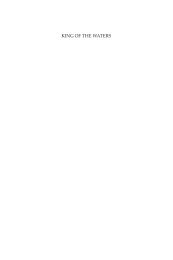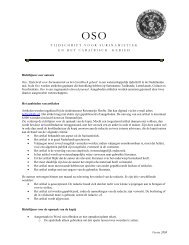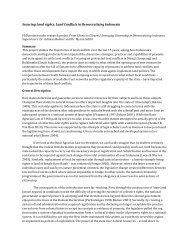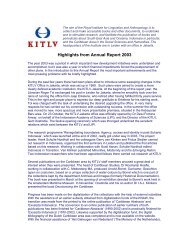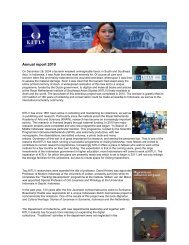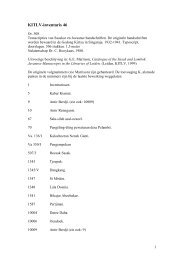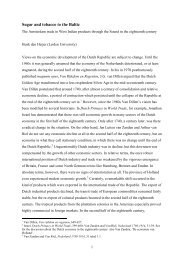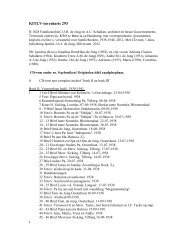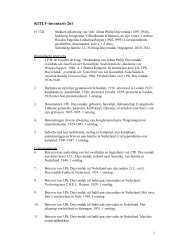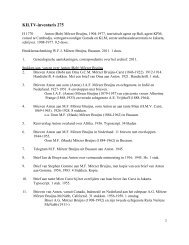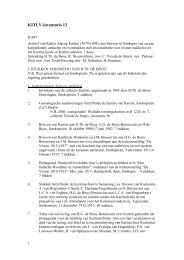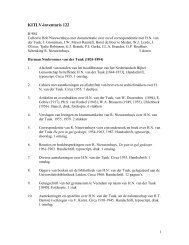The Acehnese past and its present state of study R. Michael ... - kitlv
The Acehnese past and its present state of study R. Michael ... - kitlv
The Acehnese past and its present state of study R. Michael ... - kitlv
Create successful ePaper yourself
Turn your PDF publications into a flip-book with our unique Google optimized e-Paper software.
<strong>The</strong> <strong>Acehnese</strong> <strong>past</strong> <strong>and</strong> <strong>its</strong> <strong>present</strong> <strong>state</strong> <strong>of</strong> <strong>study</strong> 13<br />
tans <strong>and</strong> sultanas had made their courts important centres <strong>of</strong> Malay-language<br />
Islamicate culture. In fact, the power <strong>and</strong> prestige <strong>of</strong> the <strong>Acehnese</strong> court in<br />
the seventeenth century enabled it not only to take up the mantle <strong>of</strong> Muslim<br />
Malay culture rooted in the earlier tradition <strong>of</strong> Malacca, but also to signifi -<br />
cantly transform it. Rather than <strong>Acehnese</strong>, the predominant language <strong>of</strong> both<br />
the royal court <strong>and</strong> Islamic religious scholarship in the Sultanate <strong>of</strong> Aceh in<br />
the seventeenth <strong>and</strong> eighteenth centuries was Malay, <strong>and</strong> written documentation<br />
<strong>of</strong> everything from poetry to commerce, history <strong>and</strong> religious scholarship<br />
was dominated by the Malay language, whose Islamicate forms had been<br />
extensively developed at the courts <strong>of</strong> coastal sultans since the period <strong>of</strong> Pasai<br />
(Reid 2005:149). <strong>The</strong> extent to which this was the case has been demonstrated<br />
by Leonard Andaya, in arguing that ‘Aceh came to <strong>of</strong>fer new st<strong>and</strong>ards <strong>of</strong><br />
“Malayness” based on Islamic models in literature <strong>and</strong> in court administration<br />
<strong>and</strong> behaviour’ (Andaya 2001:45, 2008:124-45).<br />
<strong>Acehnese</strong> authors continued to produce works in Malay, particularly<br />
in various fi elds <strong>of</strong> the Islamic religious sciences, right through the early<br />
twentieth century; <strong>of</strong> course, they continue to write in modern Indonesian<br />
to this day. 15 <strong>The</strong> earliest surviving evidence for a tradition <strong>of</strong> <strong>Acehnese</strong><br />
literature written in a modifi ed Arabic script comes from the mid-seventeenth<br />
century. However, most written texts in that language were produced in the<br />
nineteenth century (Voorhoeve 1952). A considerable number <strong>of</strong> texts survive<br />
from this later period. 16 Moreover, some <strong>of</strong> this material can be identifi ed with<br />
a number <strong>of</strong> named authors, including (but by no means limited to): Tgk.<br />
Cik Di Simpang, Abdullah al-Ashi, Tgk. Shaykh Di Seumatang, Muhammad<br />
Zayn, Jamal al-Din al-Ashi, Sharif Alwi Abi Bakr b. al-Sharif Husayn Ba Faqir,<br />
Tuan Amat, Muhammad b. Ahmad Khatib, Tgk. Khatib Langgien <strong>and</strong> Tgk.<br />
Muhammad Ali Pulo Pueb. 17<br />
15 Indeed, some <strong>of</strong> this literature maintained an importance in the twentieth century, or was<br />
‘re-discovered’ to enter into contemporary conversations <strong>of</strong> the twenty-fi rst century. For example,<br />
collections <strong>of</strong> works composed <strong>and</strong>/or compiled by later <strong>Acehnese</strong> ulama were repeatedly<br />
republished in Jawi at places like Cairo as late as the 1940s. Examples include Isma‘il Aceh’s Taj<br />
al-Muluk <strong>and</strong> Jami‘ al-Jawami‘ al-Musnafat, <strong>and</strong> the Safi nat al-Hukkam, a manual <strong>of</strong> Islamic legal<br />
procedure <strong>and</strong> administration by the eighteenth-century jurist Jalal al-Din al-Tarusani. This manual<br />
was transliterated <strong>and</strong> published by IAIN <strong>and</strong> the Dinas Syariat Islam in 2004, in connection<br />
with contemporary efforts to implement Islamic law in the province. Unfortunately, the writings<br />
<strong>of</strong> such later scholars have yet to receive any serious academic attention, even while studies <strong>of</strong> the<br />
‘golden age’ ulama continue to proliferate.<br />
16 For the most complete listing <strong>of</strong> such materials preserved at libraries around the world, see<br />
Voorhoeve <strong>and</strong> Isk<strong>and</strong>ar 1994.<br />
17 Some very preliminary discussions <strong>of</strong> some <strong>of</strong> these authors can be found in works including<br />
Hasjmy 1987 <strong>and</strong> Ara 2008. However, much more work remains to be done in developing<br />
more substantial studies <strong>of</strong> their works, <strong>and</strong> in examining them as documents <strong>of</strong> cultural <strong>and</strong><br />
social history.



